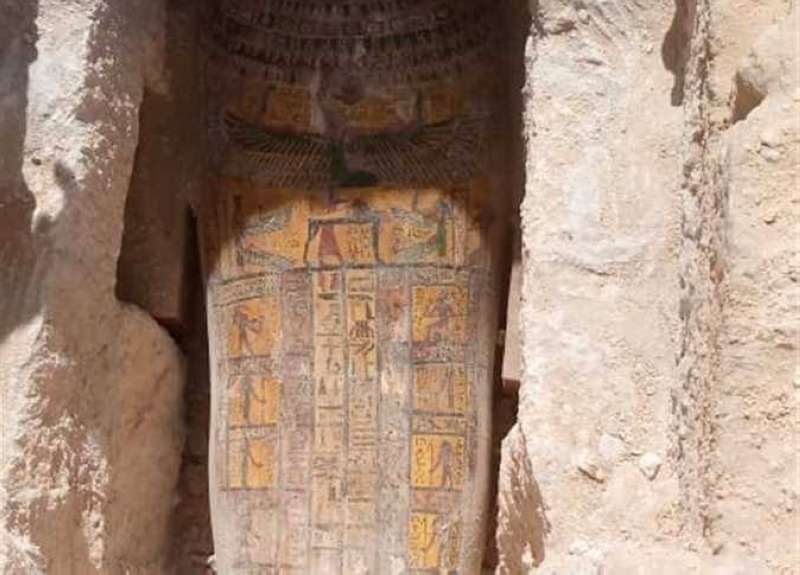Egypt announced for the first time the discovery of the cemetery of senior officials and priests of what it called ‘the New Kingdom’, as well as the discovery of the first complete papyrus in the Al-Ghuraifa area of Tuna Al-Jabal in Minya Governorate (southern Egypt).
The Secretary-General of the Supreme Council of Antiquities in Egypt, Dr. Mustafa Waziri, said in a press conference organized by the Egyptian Ministry of Tourism and Antiquities at the discovery site, that the Egyptian archaeological mission was able to uncover a cemetery for senior officials and priests of the modern state, which contains many tombs carved into the rock, containing hundreds of archaeological finds from amulets, ornaments, and stone and wooden coffins containing mummies, reports Al-Rai daily.
The cemetery also includes a group of Ushabti statues made of pottery and wood of some senior officials, such as “Jahuti Miss,” who holds the title of supervisor of the bulls of the Temple of Amun, and “Nani,” who holds the title of Jehuti’s minstrel.
Waziri explained that this is the first time that a New Kingdom cemetery has been found in the fifteenth region of Upper Egypt, as the cemeteries of the Old Kingdom, the First Intermediate Period, and the Middle Kingdom of this region were previously found east of the Nile in the Sheikh Said and Deir al-Barsha areas, which are Rock tombs belonging to the region’s rulers and senior officials.
He noted that the location of the region’s cemetery during the New Kingdom and Late Period was not known until the Egyptian mission began its excavations this season since last August.
He added that a scroll containing the first complete papyrus to be found in the Al-Ghuraifa area was also uncovered, as preliminary studies indicated that its length was approximately between 13-15 meters, pointing out that this papyrus talks about the Book of the Dead and is distinguished by its being in a good state of preservation which is scheduled to be displayed in the Grand Egyptian Museum.

